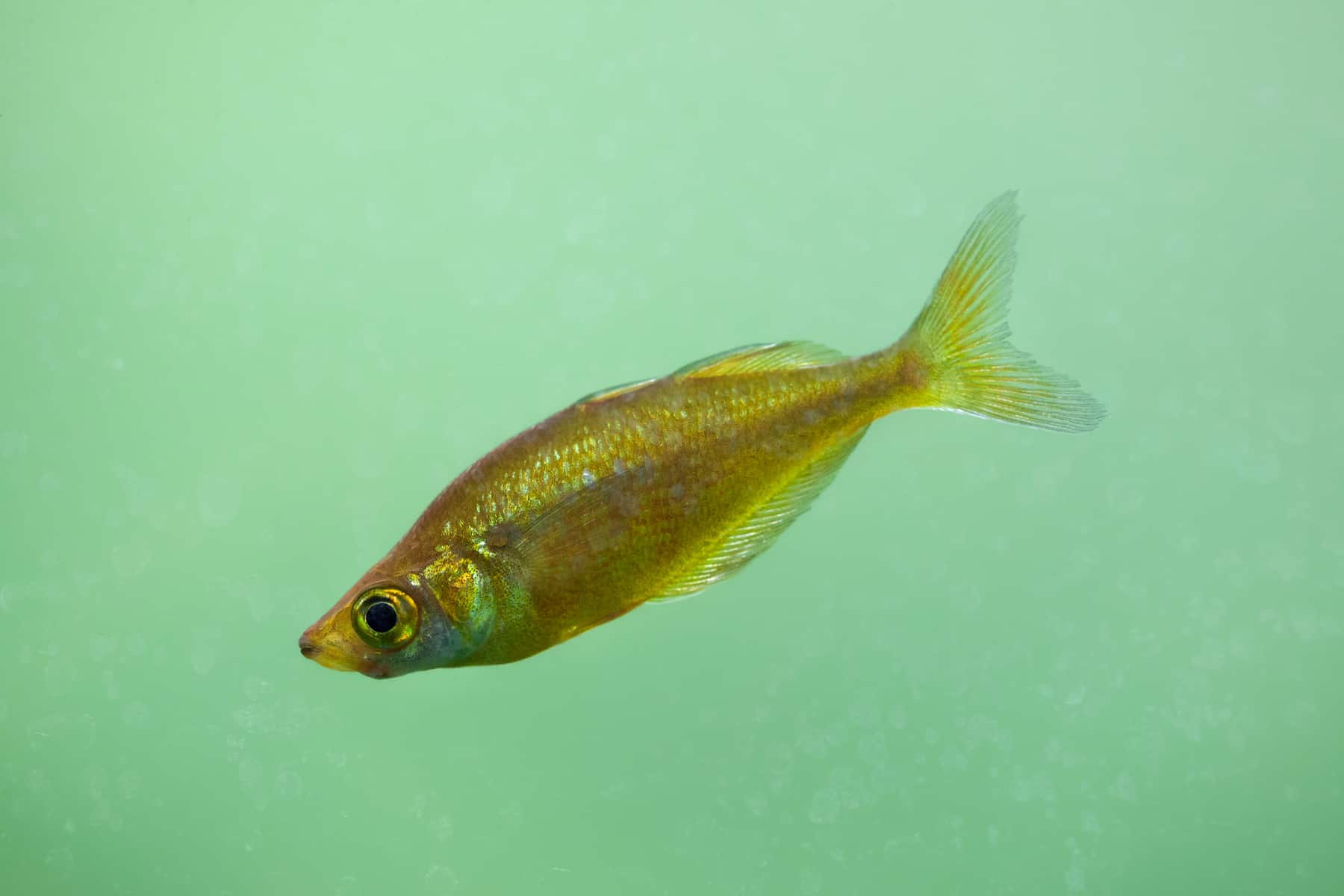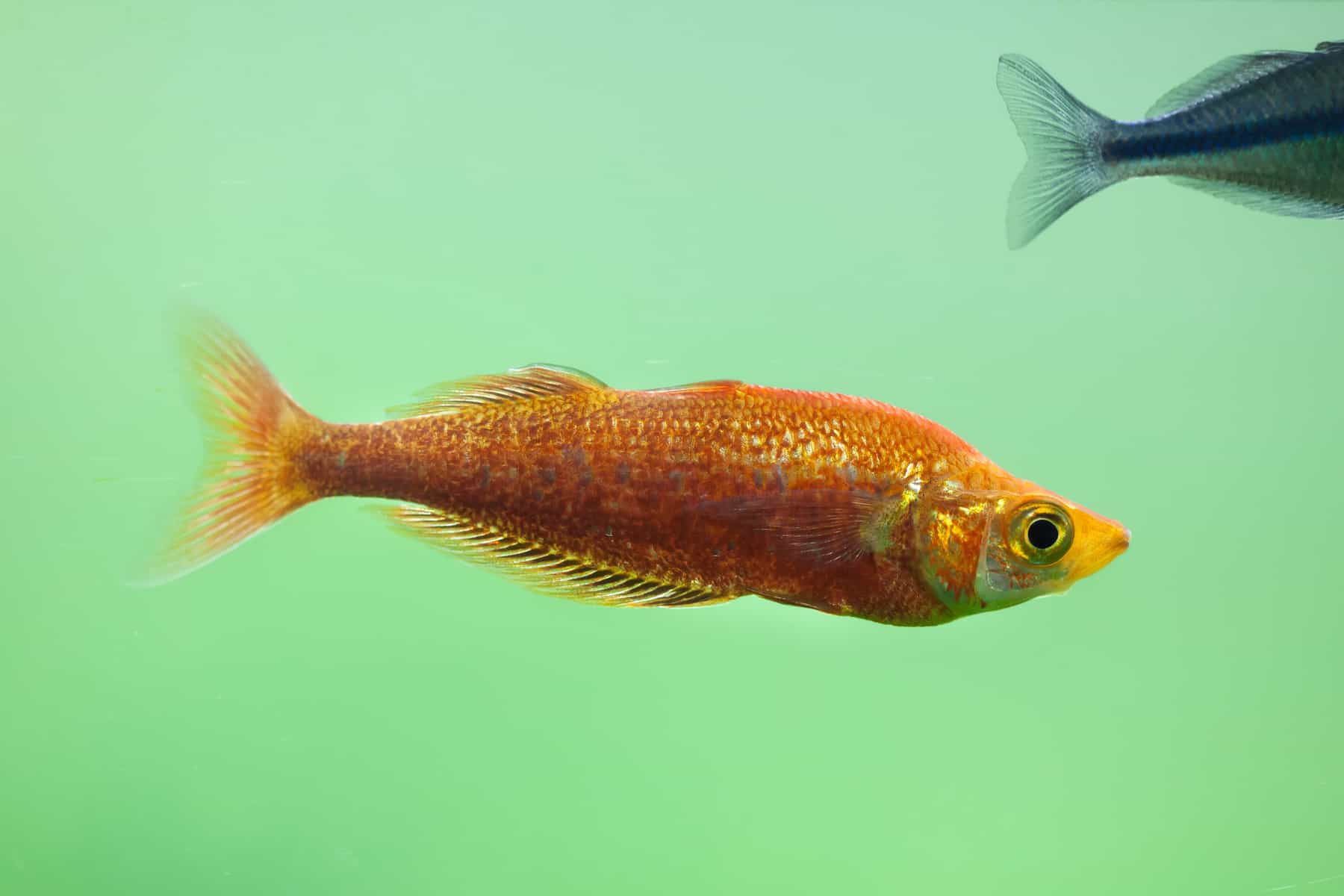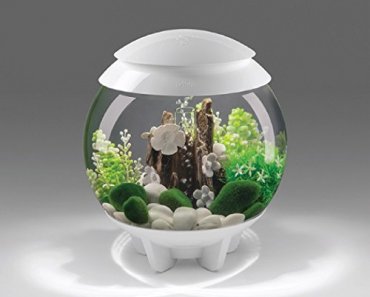Simply stunning in color, the red rainbowfish looks beautiful while schooling in a planted aquarium against a backdrop of dense vegetation. While a hardy species, red rainbows need good water quality and a large tank for these fish to fully swim around and exhibit their natural active behavior.
Keep reading to find out everything you need to know about red rainbowfish care and keeping these fish in your own aquarium!
Name
Glossolepis incisus is commonly known as red rainbowfish, salmon-red rainbowfish, Irian red rainbowfish, and New Guinea rainbowfish.
How many species of rainbowfish are there?
Glossolepis incisus is part of the Melanotaeniidae family. Within this family, there are seven genera. Within those genera, there are close to 100 different species.
Natural habitat
The red rainbow is naturally found in Northern New Guinea in Indonesia, specifically in the Lake Sentani region. While freshwater, this lake is connected to the Pacific Ocean by a small tributary so there is a large amount of diversity in species.
These fish are most often seen in large shoals among dense vegetation in shallow waters. However, these fish don’t tend to like being in direct light and will often move to deeper water or canopies when the sun is overhead.
Identification
Due to aquarium breeding, the natural vibrant colors of wild red rainbows have faded. The red rainbow can grow up to 4-6 inches (10-15 cm) and is a very active schooler.
Juvenile fish tend to have duller colors and tend to be a brownish-green with a silvery sheen until they quickly transition to their adult colors around 1.5-2 inches (4-5 cm).

How do you tell the difference between a male and female rainbowfish?
It is very easy to tell a male rainbow apart from a female rainbow; they are two totally different colors! Females are olive brown while males are a brilliant red. Males also have deeper bodies and a higher rounded back than females.
Interestingly, only the most dominant males seem to turn red, but lower temperatures will likely cause all males to change color as well.
Red rainbowfish tank requirements
Because these fish are larger than most other community tropical fish and need to be kept in big schools, the recommended minimum tank size is 55 gallons (208 L). While they are a relatively hardy species of fish, they are very sensitive to poor water conditions so water changes are a must to keep parameters stable.
Water temperature should remain at a stable value between 72-77° F (22-25° C) with KH between 9-19. pH should always be between 7.0-8.0 as these fish will not do well in softer and more acidic water conditions.
Though your red rainbow comes from calm lake water conditions, most hobbyists find that their fish actually love playing and swimming in stronger water movement; a powerhead may be needed in addition to any aquarium filters to get more flow. Just make sure that this current isn’t pushing your fish or plants too much.
Because these fish don’t like harsh lighting, any added plants will need to be able to thrive under low intensities. Here is our list of the 9 most useful low light aquarium plants for some possible ideas.
Red rainbowfish behavior
Rainbows are very active fish for their size. While they have a very peaceful demeanor otherwise, their rapid and sudden movements might stress out smaller fish. Smaller fish may also become a quick meal for your rainbow!
These fish should also be kept in a large group size, preferably with at least 6-8 other individuals. If they are kept alone, they tend to be shyer and often lose their vibrant color.
Red rainbowfish tank mates
Because of their size and more active behavior, it is best to keep similar fish with your rainbows. Good options would be other rainbowfish, barbs, danios, and cories. Species that like to snack on aquarium plants and have aggressive tendencies, like some cichlids and puffers, will not be compatible. Small and docile fish, like guppies and tetras, will almost not be compatible.

Red rainbowfish diet
Red rainbowfish are considered omnivores but are mainly carnivorous. This means they will need both animal- and plant-based fish foods. Live, frozen, and freeze-dried fish foods, such as brine shrimp, mosquito larvae, and bloodworms, will all keep your fish a brilliant color and happy in your tank.
Conclusion
The red rainbowfish is one of the most beautiful fish you can buy for your large aquarium. A full school flashing red creates a stunning contrast with plants and a dark substrate. Keep water parameters stable and make sure to choose compatible fish. Extra care will be minimal.
If you have any questions about Glossolepis incisus care or have kept these fish in your own tropical aquarium, don’t hesitate to leave a comment below!


























